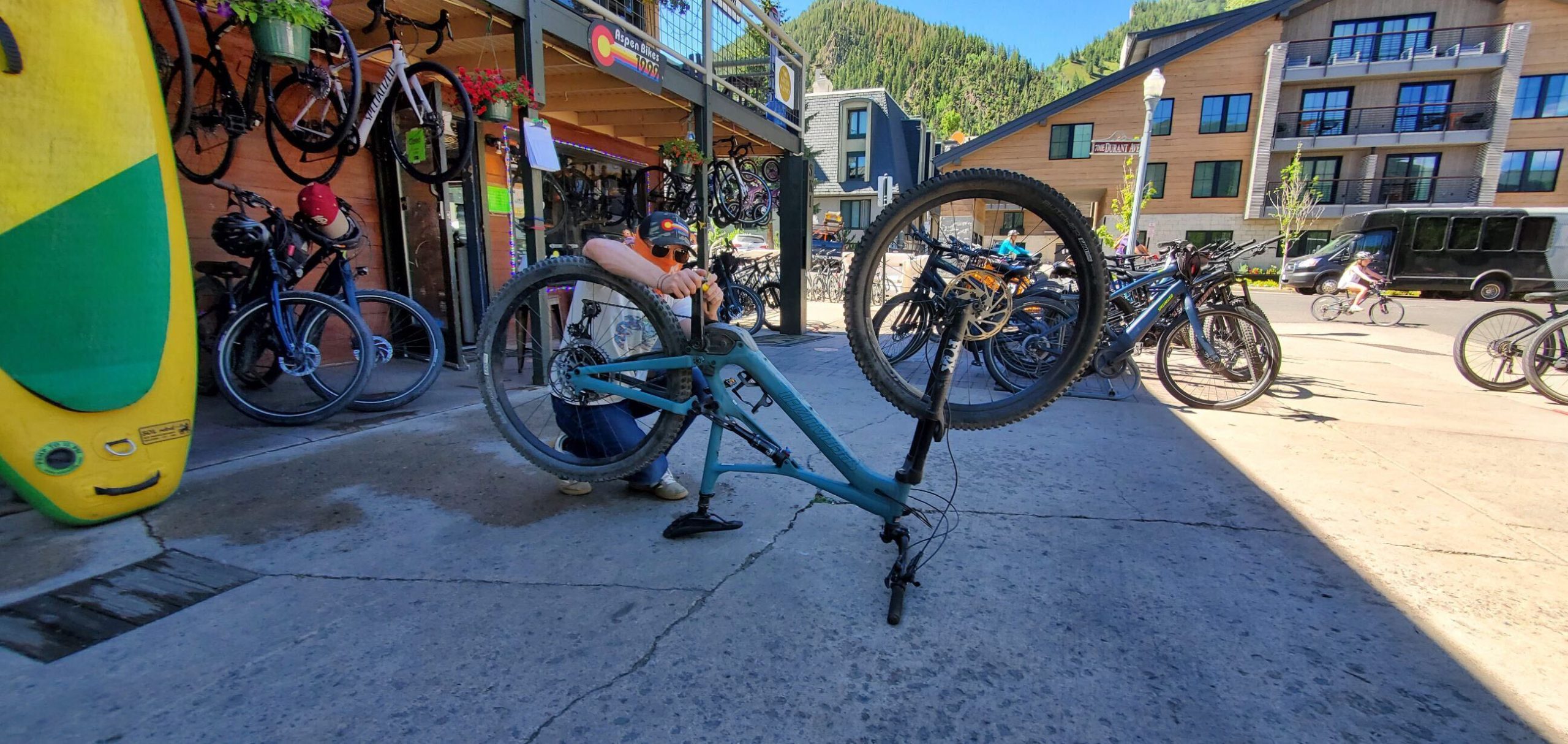
It’s only the second week back to work for Blake Linehan.
He’s been out of work for three months because of the pandemic. He works at Aspen Bikes, a small bike rental shop a stone's throw from Aspen's gondola. In the winter it turns into Stapleton Ski, a ski rental and repair store. He was able to get unemployment during his time off but it wasn’t always enough.
“I had some money saved for sure which definitely made a big difference,” he said. “I’m not married, I don’t have kids so I’m only responsible for myself.”
Linehan is also busy. Since he’s been back to work, the store rents out about 100 bikes a day. Over the Fourth of July weekend, the store averaged about 150 bikes a day.
Colorado has recovered faster than much of the nation, but many industries are still hurting, particularly in the hard-hit service and tourism sectors. About half of jobs lost during the first half of the pandemic have returned in the health care sector but only 16 percent have returned in accommodation and food services, according to data from the Colorado Department of Labor and Employment.
Gov. Jared Polis praised Colorado’s rapid economic recovery in his last coronavirus update of June and said the state’s strong public health response contributed.
“Thanks to your hard work, we are doing better than our neighboring states on virus suppression and on economic recovery,” Polis said. “The two are linked. Colorado's unemployment rate was more than three points below the national unemployment rate in the month of May.”
He also announced counties could begin entering the Protect Our Neighbors phase, which is the last phase of reopening until there is a treatment of a vaccine for the disease. This means that communities can have activities at half of the pre-pandemic capacity and no more than 500 people can be in one setting at a time. That could allow some industries to bring back jobs and reemploy people.
To qualify, counties must show a low virus prevalence, health care capacity to handle a surge, and the ability to test, track and contact trace.
Polis acknowledged that neighboring states like Arizona and Utah are having outbreaks of the disease. Colorado’s case numbers have ticked up in recent weeks, although not as steeply yet.
In May, the national unemployment rate was 13.3 percent but that has since dropped to 11 percent as the economy reopens. The latest figures show Colorado has about a 10 percent unemployment rate and the state recovered about 20 percent of the jobs lost in March and April. Colorado already had one of the lowest unemployment rates in the country before the pandemic in February at 2.5 percent.
Brian Lewandowski, an economist from Leeds School of Business at the University of Colorado Boulder, said that has more to do with the types of jobs people who live here have.
“Colorado is performing a bit better because of our industry mix,” Lewandowski said. “Because of our professional and business service jobs, we have a high concentration of that activity, especially in the metropolitan Front Range. Those jobs have held up a bit better.”
These are also jobs that allow employees to work from home and are usually higher paid.
Industries like retail, tourism, or service industries typically require employees to work in person and tend to pay less. There also isn’t any information yet about what kind of work employees come back to: full-time, part-time or reduced hours?
“We've seen hits to tourism and also food services that have been cut down to either limited service or take out,” Gedney said. “So while that industry recovered a large portion of jobs, it still has a long way to go.”
For Linehan, he did get his job and his hours back. But, he had to leave Aspen for Carbondale, a few miles down the valley. It’s hard to afford the cost of living in the glitzy large tourist town. He said he thinks he can pay his bills with just this job for now, but was working multiple service jobs to make ends meet before the pandemic.
Regardless, he’s happy to be back at work.
“I feel good because I don't like relying on unemployment,” Linehan said. “I was happy to get off of it because I think that there are people who are struggling more, who those resources should be devoted to rather than myself.”
Margaret Caffrey, a manager at a small casual restaurant in Boulder, was furloughed on March 21 and couldn’t come back to work till the second week of May. Like Linehan, she was also able to get unemployment but had more anxiety about coming back.
“I definitely had a panic attack before I went back in,” she said. “Little things like ‘Is it important to open a restaurant during COVID? Is it important to serve food during this time [when we] could be staying home and taking better care of our community?’ ”
Caffrey said she told her co-managers about her feelings and they did not force anyone to come in who didn’t want to. Her restaurant was approved for a federal Paycheck Protection Loan and that has helped to cover her and her coworkers’ salaries.
Business, however, is still nowhere what it was before the pandemic. In some ways, she’s happy about it because she likes that people are taking social distancing seriously. However, Caffrey still worries about the future of her job.
“There’s a bit of anxiety,” she said. “We’re doing this but we don’t actually know if this is going to be sustainable.”
The lack of a secure future has her thinking about other careers. Caffrey will only make the leap if she has to; she likes working in the service industry, she said. She just hopes there’s a future in it.
Lewandowski acknowledges the economic gains but warns people to not get too excited.
“I think it’s kind of low-hanging fruit when you go from being on lockdown to where many of our businesses were shut down to reopening,” he said. “Of course we’re going to get this snapback but what happens after?”
Lewandowski still expects a wave of some bankruptcies, companies that never reopen, or companies that will survive for a while longer but ultimately can’t make enough money to be sustainable. He estimates it’ll take till 2023 to see pre-pandemic levels of economic activity — if there are no other widespread shutdowns.








